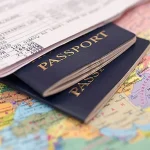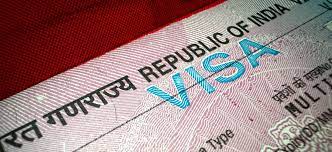Traveling to India can be an exciting experience, whether it’s for tourism, business, or a quick stopover. But sometimes, travelers might find themselves needing to stay briefly in India while in transit. This is where the Transit Visa comes into play. In this guide, we will walk you through everything you need to know about the Transit Visa for India, as well as the Urgent Emergency Indian Visa, for those who need expedited processing.
What is a Transit Visa for India?
A Transit Visa is a short-term visa granted to travelers who are passing through India on their way to another destination. This visa allows you to stay in India for a limited period, typically for up to 72 hours, without engaging in any full-fledged tourism or work-related activities. The key purpose of a transit visa is to facilitate quick passage through the country, usually for air travelers who have layovers or connecting flights in India.
Who Can Apply for a Transit Visa?
In general, anyone traveling to another country with a layover in India may be eligible for a Transit Visa. However, the requirements can vary depending on nationality, travel route, and the length of stay. Typically, transit visas are granted to passengers who will remain in India for less than three days, provided they do not leave the airport or their designated transit area.
Different Types of Transit Visas for India
India offers two main types of transit visas:
- Airport Transit Visa (ATV): This is granted to travelers who are changing flights at an Indian airport but not leaving the airport premises. It’s generally valid for short durations, often just 24 to 72 hours.
- Regular Transit Visa: This is applicable if the traveler needs to leave the airport for a brief period, for example, to stay in a hotel or wait for an onward flight. URGENT EMERGENCY INDIAN VISA
How to Apply for a Transit Visa to India
Applying for a Transit Visa to India is a fairly straightforward process. Here’s a step-by-step guide:
- Online Application: Visit the official Indian visa application website and complete the visa application form.
- Documentation: Prepare the required documents, which we will discuss in the next section.
- Visa Fee Payment: Pay the necessary visa fees online via credit or debit card.
- Submit the Application: Submit your application along with supporting documents at the nearest Indian consulate or embassy.
- Wait for Processing: The processing time usually takes a few days, but it can vary depending on your location.
Essential Documents for the Application
When applying for a transit visa, ensure that you have the following documents ready:
- A valid passport with at least six months of validity from the date of entry into India
- A completed visa application form
- Recent passport-sized photographs (as per specifications)
- Confirmed onward ticket to your final destination
- Proof of accommodation or airport hotel booking, if applicable
- Any other documents requested by the Indian embassy
How Long Does It Take to Get a Transit Visa?
The processing time for a Transit Visa can range from 3 to 7 business days, depending on the embassy or consulate. However, this can vary depending on individual cases, so it’s always best to apply well in advance of your trip.
Cost of the Indian Transit Visa
The fee for a Transit Visa varies depending on the applicant’s nationality and the duration of stay. Typically, fees range from $10 to $30, but it’s always advisable to check the most current rates on the official Indian embassy website.
Validity and Conditions of the Indian Transit Visa
The Transit Visa typically grants a stay of up to 72 hours. However, this can vary depending on the embassy or consulate’s decision. Here are some important conditions:
- You must travel onward within the permitted time frame.
- The visa is generally non-extendable.
- You are not allowed to engage in any form of work or long-term tourism during your stay.
Can You Leave the Airport on a Transit Visa?
If you’re granted a Transit Visa, it may come with restrictions. For example, the Airport Transit Visa typically does not allow you to leave the airport. However, if you’re given a regular Transit Visa, you may be allowed to briefly leave the airport and stay at a hotel or other designated accommodations.
What is an Urgent Emergency Indian Visa?
Sometimes, travelers find themselves in a situation where they need to travel to India on short notice. In such cases, the Urgent Emergency Indian Visa can be a lifesaver. This visa type is designed for travelers who need to get to India quickly due to emergency situations such as medical emergencies, urgent business, or family matters.
Who Should Apply for an Urgent Emergency Visa?
You should apply for an Urgent Emergency Indian Visa if:
- You need to travel immediately due to a medical emergency.
- You have an urgent business matter that requires your presence in India.
- A family emergency, such as a death or serious illness, compels you to travel to India on short notice.
Steps to Apply for an Urgent Emergency Indian Visa
The application process for an Urgent Emergency Visa involves:
- Emergency Request: Start by contacting the nearest Indian consulate or embassy and explaining the emergency.
- Documentation: You may need to provide additional documentation, such as a medical certificate, a letter from your employer, or a death certificate.
- Processing: The embassy will prioritize your application and expedite the processing.
Documents Needed for Emergency Visa Applications
For an Urgent Emergency Visa, you will need:
- A valid passport with at least six months of validity
- The completed application form
- Proof of the emergency (medical documents, business letters, or family-related documents)
- A confirmed return ticket
- Visa fee payment (if applicable)
How Fast Can You Get an Urgent Emergency Visa?
The processing time for an Urgent Emergency Visa is significantly faster compared to a regular visa. In some cases, you can receive the visa within a few hours or up to 1-2 business days, depending on the urgency and the consulate’s capacity to process such requests.
What Are the Fees for an Urgent Emergency Visa?
The cost for an Urgent Emergency Visa is typically higher than a standard visa, as it is processed on an expedited basis. The fee usually ranges from $50 to $100, but this can vary based on your nationality and the consulate’s regulations.
Conclusion
Whether you need to pass through India briefly with a Transit Visa or need an Urgent Emergency Indian Visa for unexpected circumstances, understanding the application process is key. By following the guidelines provided in this article, you can navigate the visa process with confidence and ease. Always ensure that you have the correct documentation and apply well in advance (if possible) to avoid last-minute complications.





